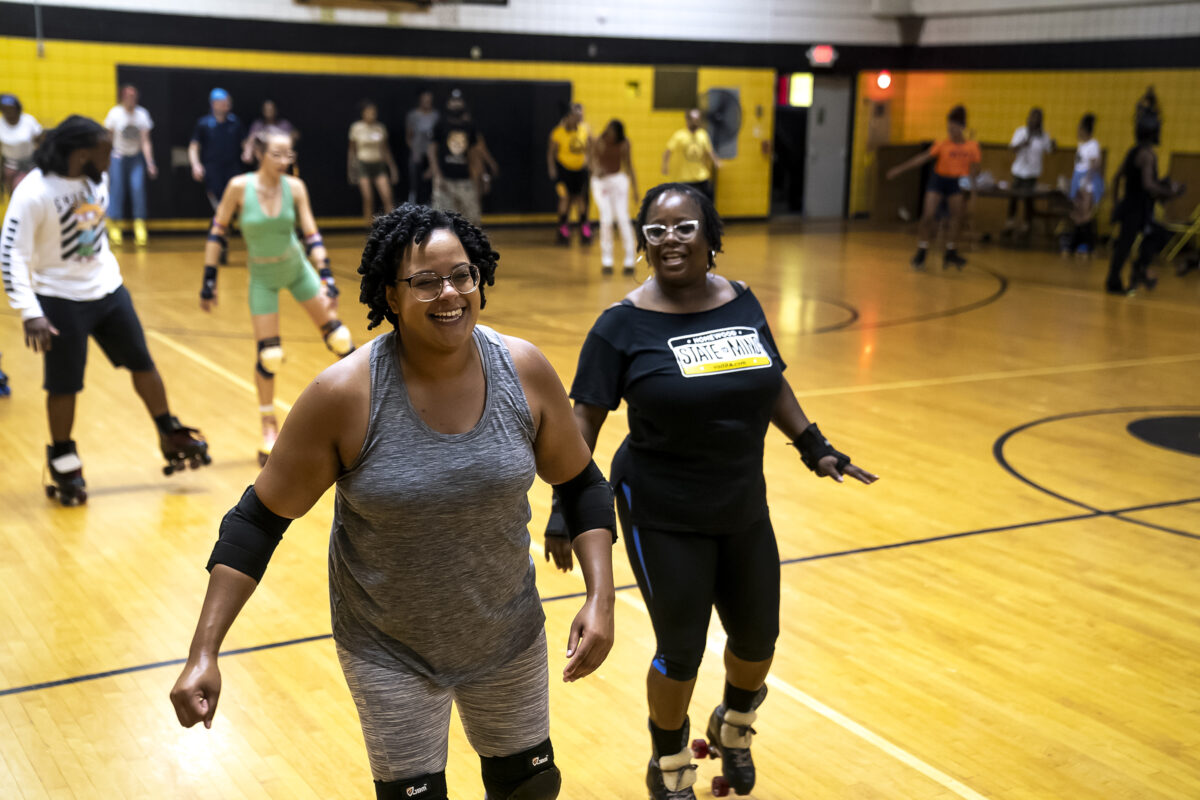Inside the YouthPlaces building on the North Side, there’s a small gym that on Monday and Tuesday evenings bounces with up-tempo R&B music. The people there, a few dozen strong, range from energetic kids to flexible 20-somethings to dancing grandmas. Their activity is an old Pittsburgh cultural staple that they hope is back on the rise: roller skating.
“It’s fun,” said Alberto Almarza, a teacher from the city’s Observatory Hill neighborhood. “Did I mention it’s fun?”
Almarza is part of this skate class, which meets twice a week to learn new tricks, groove to the beat and generally be a part of a growing community. They welcome newbies and embrace the freedom of gliding around for two hours to music. If they had it their way, more people would enjoy it with them and there would be more places to skate, the way there used to be.
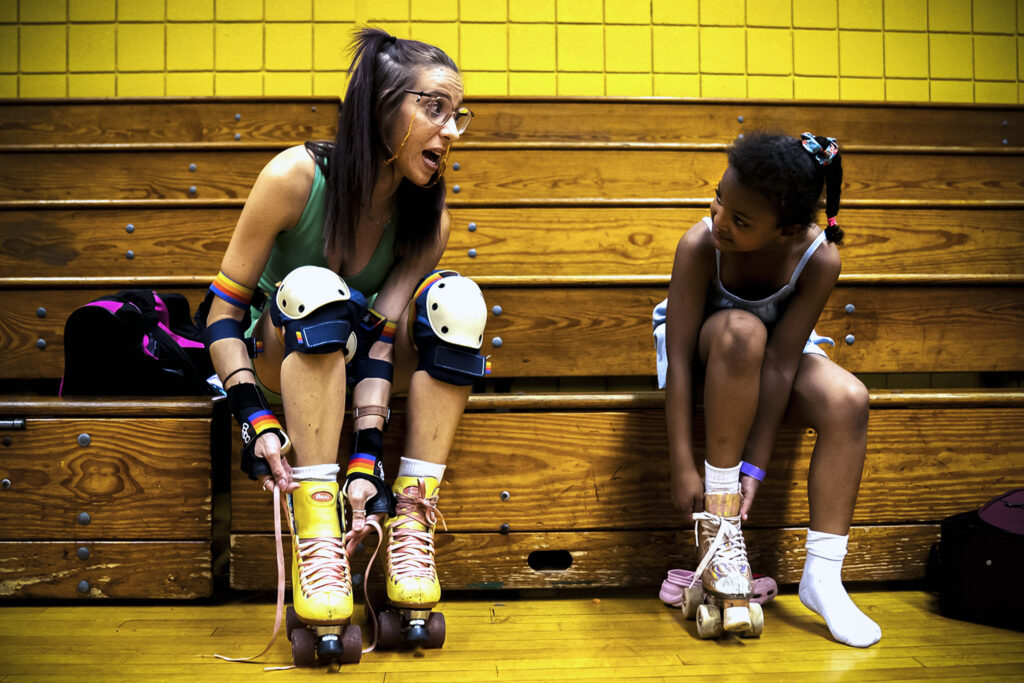
The sport, with its free-flowing, rhythmic nature, has long been entrenched in Black communities, and Pittsburgh is no different. Roller rinks dotted the city in the mid-20th century. Amid rising property costs, owner retirements and the growing popularity of ice skating, rinks have gradually closed over the past three decades to the point that only a few remain in the area.
Skating adherents, though, never went away. Some who grew up skating with their friends have rediscovered it. They include LaNeda Daniels, of the Hill District, who remembers wearing metal skates in the 1970s. Daniels has imparted her love for the sport to her family and delights in pulling up Instagram videos of her grandkids doing tricks.
The accessibility of skating is key to its culture. With a low barrier to entry (a pair of skates lasts a decade, at least, skaters say) and a noncompetitive nature, it attracts a variety of participants and integrates people of all ages. In an era with fewer rinks, the skating community seizes the chances it has and aims to entice new and returning skaters.
At the beginning and end of the class, everyone repeats a refrain: “I can skate! I will skate! I am a skater!”
This small but growing community is dedicated. Their goal is adding new skating spots and nestling back into communities as a core element, with visions of providing a safe after-school hangout for teens and building on its generation-crossing appeal.
“We want to get seen and show the city that this is popular and necessary,” said Dana Bannon, an avid skater and co-chair of the newly formed PGH SK8 Collaborative.
• • •
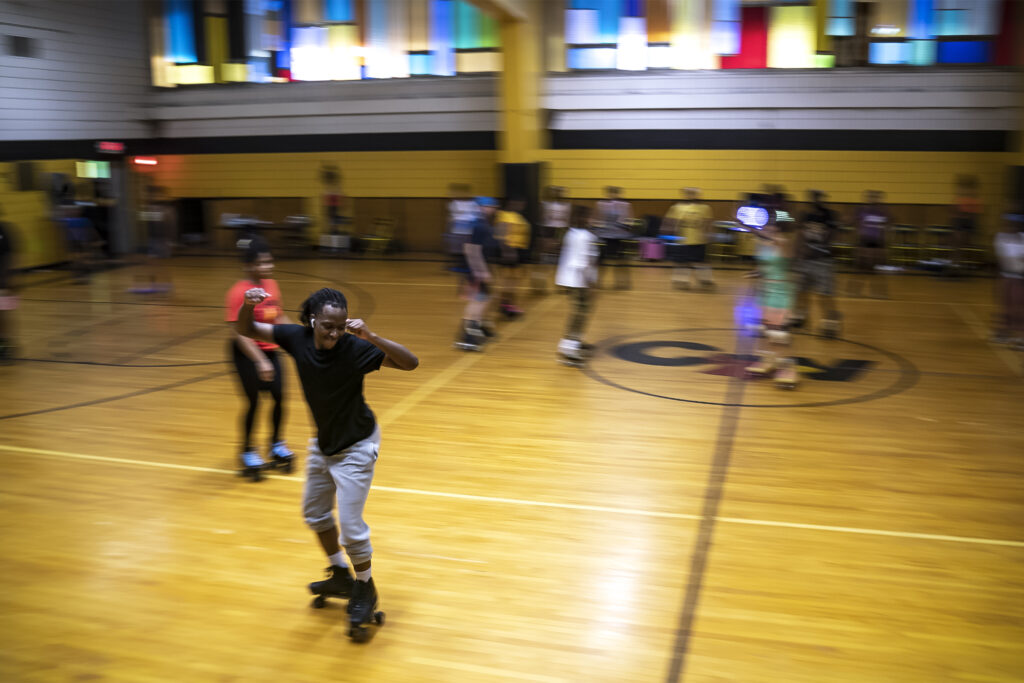
Many of the skaters at the YouthPlaces gym practice a similar go-to move. They glide backward and turn their bodies back and forth, timed with the beat of the music, as their feet make a smooth figure 8. Called “rexing,” the style is a Pittsburgh original and was documented alongside other cities’ trademarks in a 2019 HBO documentary titled “United Skates.”
Pittsburgh skaters pride themselves on their rhythmic dance movements. At the skate class, instructor Rico Rucker keeps the local style going, teaching the class the basics of skating backward. Everyone slams their skates down at once as they practice. It creates a drumbeat to the music, which is always blaring.
“People from Atlanta, Boston, Cleveland — they come here to watch us skate, because of our style,” says Rhonda Masih, a longtime skater from Braddock who serves as both instructor and wise, guiding presence at skate class.
Masih is the designated teacher for the brand-new skaters who are still getting their sea legs on the hardwood. She brings them over to the side where there are soft mats, steadying nervous first-timers, and gets them stepping forward and backward — always with the chest out and the chin up. Gradually, she’ll bring them out onto the hardwood, where they do slow laps around the gym and gain comfort.
“It’s like riding a bike,” she says. “You never forget how to ride a bike.”
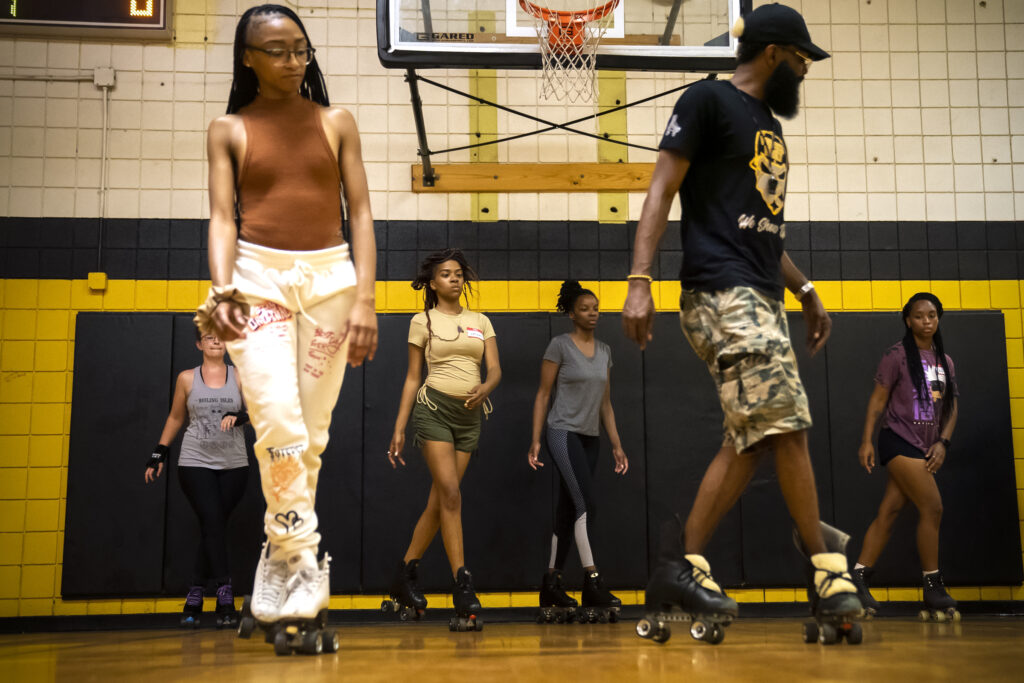
There are no issues finding places to skate for Masih, who seems to move on her own rhythm. She says she skates outside on any flat sidewalk and any open tennis or basketball court she can find. But growing up, she remembers tagging along with other kids on packed buses to Bridgeville, where there used to be a roller rink.
That Bridgeville rink is used for inline hockey games today.
There are fewer and fewer easily accessible areas to skate now. Those who are most often squeezed out of space come from Black-majority communities, where the sport is popular but local parks are of lower quality. Some basketball and tennis courts have “no skating” signs posted.
Bannon terms the lack of available space “sports gentrification.” A mother of two neurodivergent kids who found their niche in skating, Bannon gets frustrated when potential skating venues get phased out — and her kids lose accommodating spaces. To her, the rapid rise of pickleball is another example of older upper-class white people taking over public spaces.
“It sounds like I’m anti-pickleball, but I’m not,” she said. “I get the appeal and attraction. It has its place … [but] they are making moves that are insane. I can’t get over how quickly this has happened.
“We need flat land and hard surfaces, and we’re not getting anything. Why are they getting everything?”
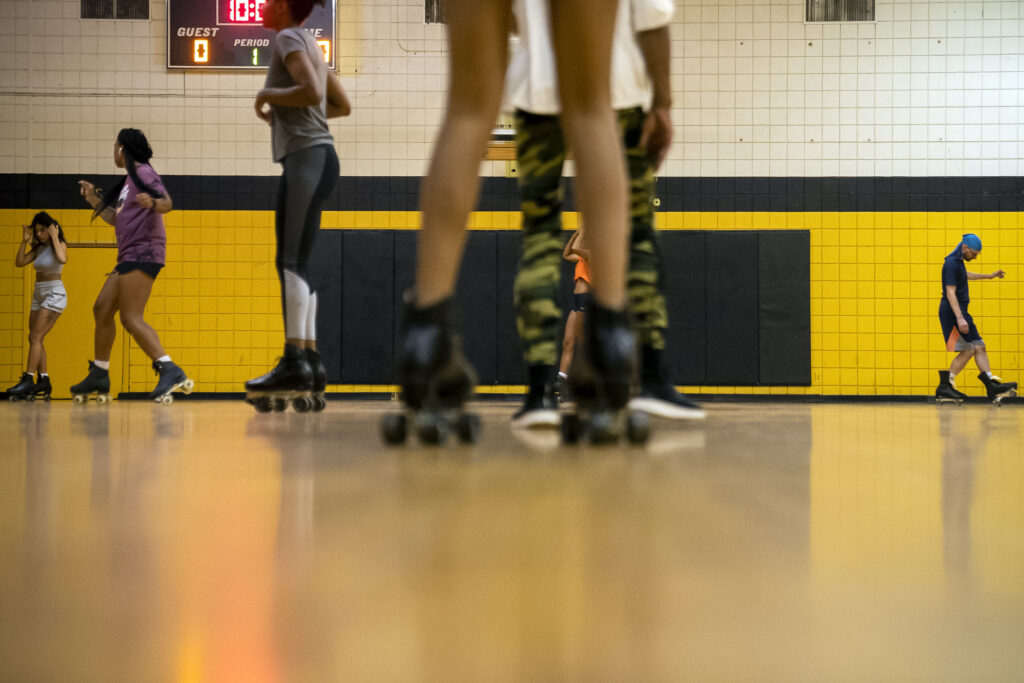
She cited Schenley Park, where additional pickleball nets are being installed at the outdoor rink that is used for ice skating in the winter. The PGH SK8 Collaborative members have tried to take matters into their own hands by registering gyms such as the one at YouthPlaces and reserving the Schenley Park Skating Rink for four dates throughout this summer — including a summer skate on Aug. 4, with skate rentals provided.
There is a grassroots movement to reclaim a former center of the skating community. The Buy Back the Block Movement, headed by Rucker and fellow instructor Dawna Biggs, advocates for community ownership of the Greater Pittsburgh Coliseum in Homewood, a building that once was a cherished event space with a roller rink. At the moment, the Urban Redevelopment Authority owns the space, which currently sits as an empty lot.
There is no timetable on the URA redeveloping the building, according to Tanika Harris, the URA’s director of communications. A 2021 request for interest led to multiple bids, including one from a manufacturer and one from Rucker, but none proved feasible, Harris said. They have closed outside bidding and are focused on the “ideation” phase of the process.
“It needs to be multi-faceted,” Harris said. That means that for the URA, any Coliseum development should serve a recreational purpose while also creating jobs. Mayor Ed Gainey’s office has expressed its hope that the community’s voice is heard throughout the redevelopment process.
The Buy Back the Block Movement shows that there is a strong desire to reestablish community gathering places.
“These neighborhoods need funding and parks redone,” Bannon said. “They don’t necessarily want pickleball.”
• • •
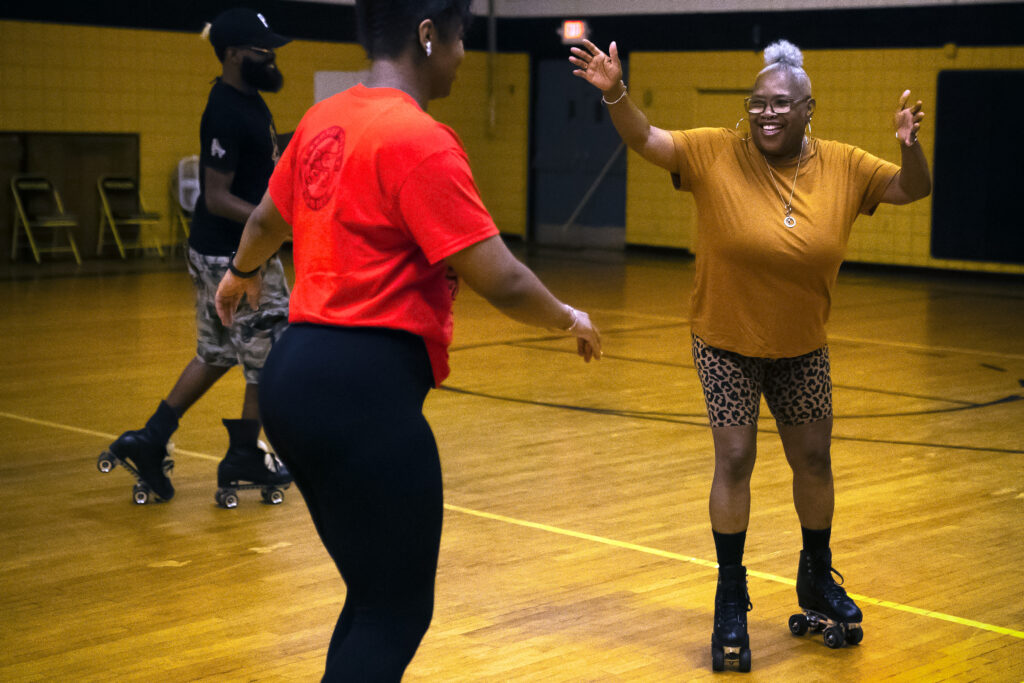
Skaters praise the sport’s chill environment as central to its appeal. Some buy into the dance element, moving their hips as they skate in circles, while others focus on their own smooth movements.
“It’s a stress reliever,” Daniels said.
“I went into it reluctantly,” Almarza said. “I got really into it … It became a healthy way to get out of my head, do exercise, dance — just do a physical embodied experience.”
There is a consistent community at the skate class. Everyone seems to know each other, united by a shared favorite activity. The group is racially diverse with a widely spread age range. Kids come with their parents and grandparents; Masih enlists the more experienced kids to guide the newcomers. There are also regular people showing up after work, like Almarza, diving into a newfound hobby.
“You come in, and people ask, ‘Where were you last week?’” said Jazmyn Rudolph, an instructor from the North Side.
She said there is little pressure to compete or show off. “It’s not competitive. There’s no score, no winners and losers.”
The music ties the place together. A group of teens hangs out by the booming speakers and controls the playlist. As people start filtering out at the end of the two-hour class, the music still blares, and kids scramble to the doors once their skates are off. At the exit of the building, a kid tries to flip a water bottle, only to spill it all over the floor.
They will be back tomorrow, then next week, and if they’re anything like their parents and grandparents, they might not stop showing up.
Harrison, a rising senior at Denison University, is a Union Progress summer intern. Email him at hhamm@unionprogress.com.

